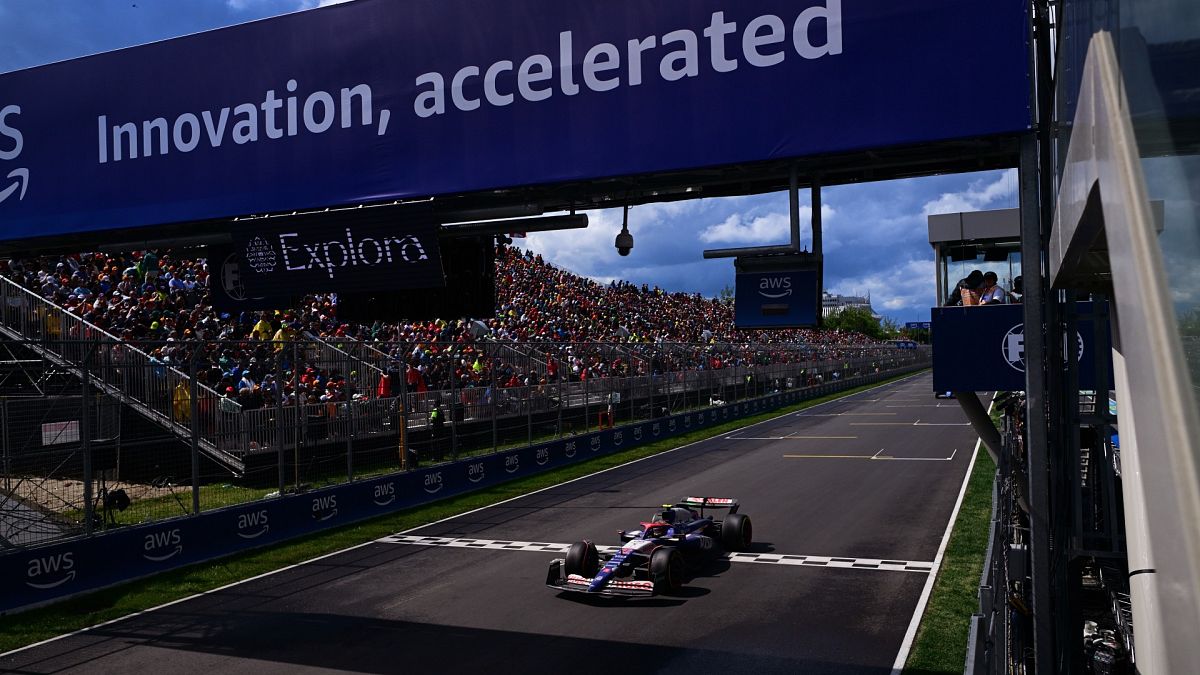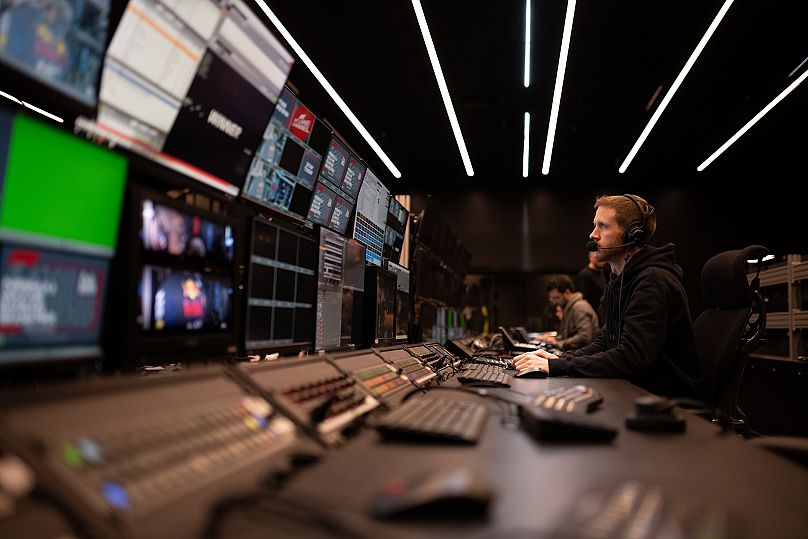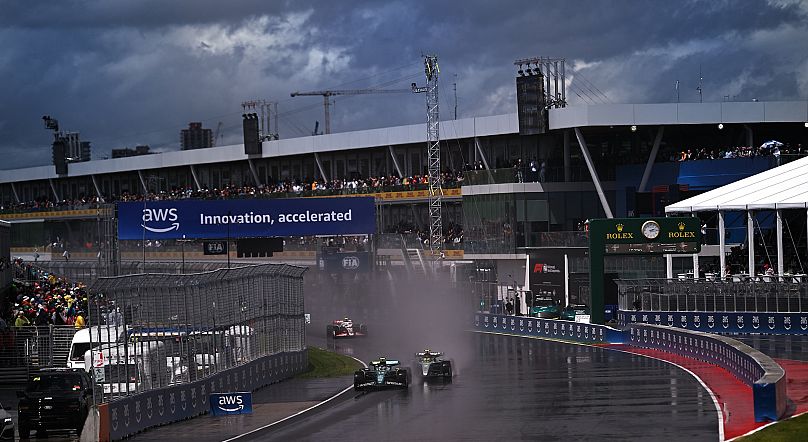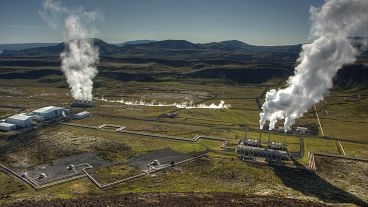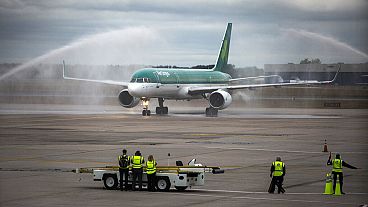F1 is teaming up with Amazon Web Services to provide data-rich info for fans to help create meaningful insights, as well as using the technology to make the sport more competitive.
Formula 1 has been sitting at the pinnacle of glamorous celebrity sports since 1950. Currently, races take place in 24 locations around the world, with their high-octane action, adrenaline rush and nail-biting twists drawing in millions of fans.
Parent company Formula One Group is valued at some $17.35 billion (€15.94 billion), making it the world's 1072th most valuable company, according to companiesmarketcap.com.
The British Grand Prix took place last Sunday ( 7 July), with Lewis Hamilton taking the crown for the first time since December 2021 and making history yet again and, this year, Formula 1 has teamed up with Amazon Web Services (AWS) by using generative artificial intelligence (AI) to bring some key new features into the mix, with the aim of making the races even more engaging to fans.
AWS is one of the world's most broadly adopted cloud, with millions of clients and more than 200 fully-featured services from data centres across the world.
The companies, which have been working together since 2018, have recently upped the focus on maintaining race performance by identifying and analysing off-track tech issues. AWS is extending its support to Formula 1 to use root cause analysis to mitigate these issues, so that drivers, teams and spectators have a smooth experience and are able to perform their best.
Making full use of the data
Not only that, but AWS is also helping implement new technologies such as high performance computing (HPC) and machine learning models to further enhance the sport through intuitive insights and next-level car design.
Neil Ralph, principal sports industry specialist at AWS said on the AWS website: "Formula 1 cars generate more than a million data points per second and that's just the start. F1 captures additional data on the drivers, circuits, weather, and the amazing history of F1 itself. At the core of our partnership is the ability to extract valuable insights from all of this data.
"With AWS' generative AI capabilities, F1 will elevate its storytelling as historic data is effortlessly analysed alongside real-time events to engage fans with more dynamic and timely commentary. Together, we are redefining the way the sport is watched, raced and managed."
How is AWS bringing Formula One fans closer to the sport?
With races happening all over the globe, tickets to the event itself are expensive and most fans have to settle for watching their favourite sport on television. Similarly, unless they manage to bag prime spots at circuits like Silverstone, it is very likely that they are catching only part of the race.
As such, AWS is striving to bridge the gap between fans and the sport, by including statistics such as Close to the Wall, which tells fans just how terrifyingly close a race car gets to the wall in some corners.
Another stat, Battle Forecast shows fans how many laps a chasing car would have to make to have a reasonable chance of overtaking the one in front of it. This uses data and insights such as predicted driver pace and track history.
Other insights include the Hybrid Energy System, telling fans how efficiently drivers are using their car's electrical energy, whereas the Predicted Pit Stop Strategy gives them more insight about race strategy.
Pete Samara, director of technology and digital innovation at F1 believes that the stimulation provided by generative AI has made Formula 1 take stock of its processes, and look closer at whether it is really being as productive and effective as possible.
He explains: "If we think about AI, as a sport, for F1, we're looking at how does it help us grow, how do we give fans what they want in the place that they want and how does it help us grow commercially?"
For car racing, AI also helps immensely with repetitive and manual tasks, such as searching for log files and sifting through large amounts of data to spot trends and patterns and bring out insights.
When asked how Formula One is using AWS for its races, Samara explains: "We're making sure we adopt the right technologies for the right reason, and AWS is one of our big partners in this space. AWS has been with us for multiple years and as a partner, we leverage them from a transformation point of view."
With AWS' high performance computing capabilities, F1 can use aerodynamic simulations to produce faster and more efficient cars.
AWS has also helped Formula One in building and scaling up their cloud capabilities and solutions, as well as establishing the latter's own cloud team.
Coming to the most exciting features, Samara shares: "Going forward, AI and the adoption of AI is where we'll be leaning on AWS, on their knowledge and their expertise and experience. One area that really excites me is efficiency. Root cause analysis (RCA) is a project headline that we've got internally.
"With RCA, it's allowing our IT teams to really be more effective and efficient. They're a great team already, but how do we make that great team even better? So with RCA, that's going to allow our engineers to see trends and recurring issues."
RCA is especially useful for F1 engineers wanting to look back on past races and venues, to identify kinks and collaborate to find a solution.
AWS has also designed F1's Canada Grand Prix trophy using generative AI this year.
How is AWS helping F1 turn graphics into meaningful stories?
Formula 1 is one of the most data-rich and graphics-heavy sports in the world, so leveraging those graphics and converting them into thrilling, engaging stories has consistently been a key goal for the company.
Each F1 race car has 300 sensors, which produce over 1.1 million data points per second, transmitting data constantly to the pit.
As such, with F1 having ramped up focusing on improving broadcasting for its fans, data is very much at the core of this transition. The company usually provides global feeds to rights holders and works with them to make the feed more localised to every market.
Samara elaborates: "If you look at what AWS have done with us over the last five or six years, we've leaned on them quite a lot to tell our story from a graphics and data point of view. Simplifying that data is really important. What you can see from F1 insights powered by AWS, it tells a narrative for fans, and it helps complex things in simple ways.
"There's so many stories that are within Formula 1 and I think the AWS insights from the last five and six years tell that narrative in a simple way. Leaning on your partner is very important for this. We are a storytelling machine, excitement and suspense is what we have to build, and the data is at the heart of that."
Samara also highlights that sometimes it's just as important to elevate and enhance simple insights, as it is to demystify complex ones, and achieving a balance between the two is really important as well.
By moderating data insights this way, AWS helps Formula 1 retain the interest of both ardent fans, as well as ignite more curiosity in casual onlookers.
All the stats fans want to know
To further this goal, Formula 1 and AWS have come up with Statbot, a new AI tool aimed at quickening the analysis of historical and real-time race data, and transmitting insights and facts much faster to broadcasters. This allows them to make their race weekend coverage much richer and more nuanced.
Samara pointed out: "Statbot is one of those vehicles we're developing with AWS to be more effective in a live scenario. That's not a front-facing tool, it's an internal tool for our graphics and our production teams, to help them be more effective and efficient and tell better stories. It helps them get the right graphics at the right time, but also delve into our historical data - for example, who's won the most races, who's got the most pit stops.
"Those are all stats that fans want to know. Things are moving fast, we can't predict how our partnership with AWS will evolve in the next five years, but it's all very exciting. The future is really optimistic for us."
'Don't launch a technology for the sake of it'
Coming to the challenges faced when implementing AI features so far, Samara reveals that budget and finances are always a concern, as well as convincing leaders that a new technology could have merit and be successful down the line.
As such, sometimes, businesses can take some convincing in order for them to take the leap, when it comes to things like artificial intelligence.
Samara says: "You have to get the leaders thinking the same way. And don't launch a technology for the sake of it. Instead, see where the real gains of an organisation are and how technology can help you, rather than the other way around.
"It's important to collaborate openly and communicate transparently what you're working on. The pressure is always high on us to innovate, that's in our DNA. But we use that as a positive, and ask ourselves, how do I have the right conversations, and how do we bring people on that journey."












